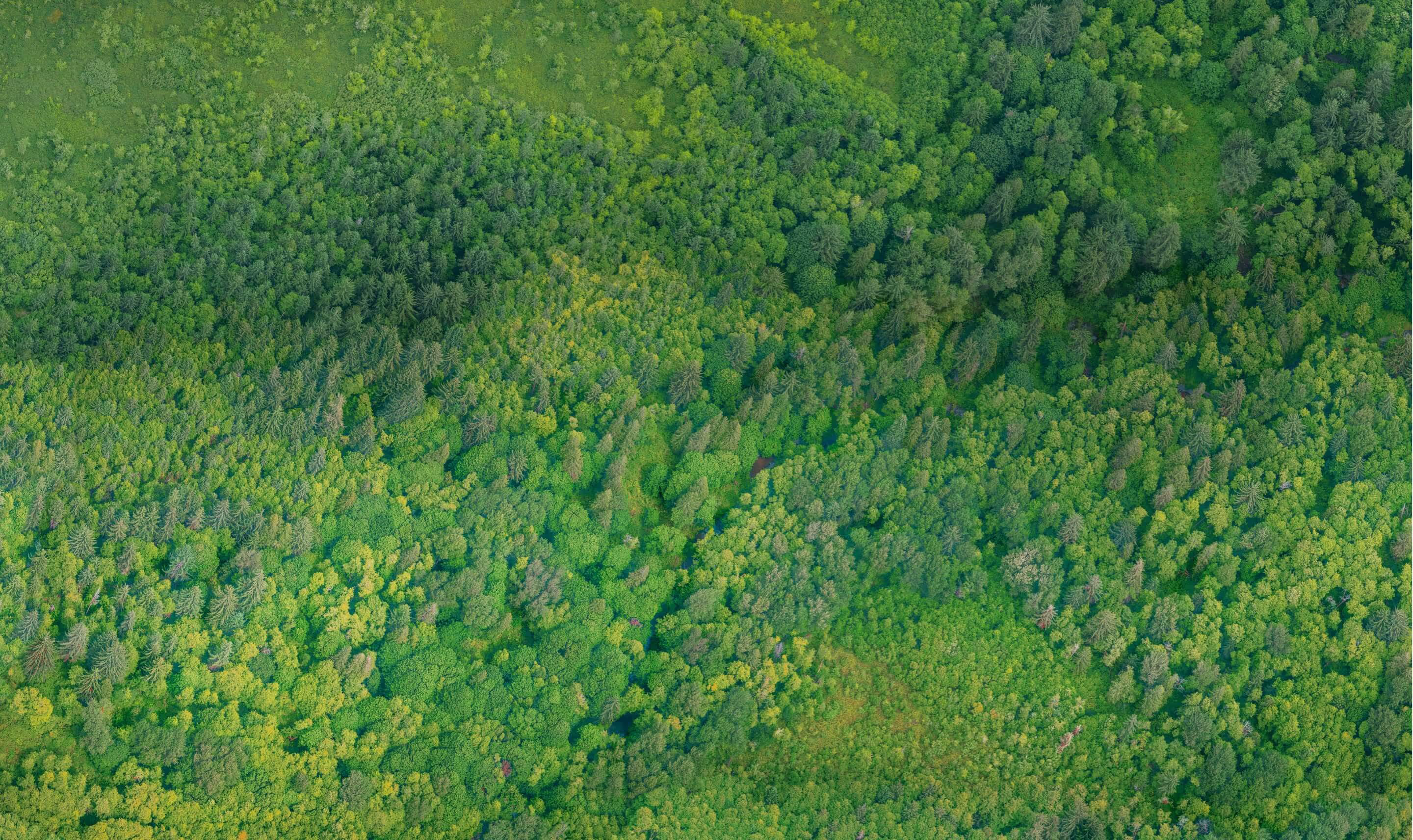The best practices and challenges of reforestation by Jacques Plan
.avif)
One cannot discuss reforestation without interviewing Jacques Plan, an expert passionate about the subject. He gives us his views on this practice, which has numerous benefits such as ecosystem restoration and climate regulation. But that is not all. He also tells us about the challenges reforestation faces! The choice of appropriate species and the management of resources are part of this.
Jacques Plan is forest engineer, expert in reforestation and specialized in ecological restoration in the tropics. For 22 years, including 18 years of expatriation, he worked on the subject of tropical forests. He has collaborated with numerous local authorities, the National Forestry Office and NGOs. He himself is a member of The NGO “solidarity experts” and president of the association” Silva: trees, forests and societies ”.
1. What do you think of reforestation operations in the current context? What challenges do they respond to?
The provision of essential services
Reforestation programs make it possible to provide the multiple services that natural forests can no longer provide because they have disappeared or are too degraded.
These are:
— Economic services:
Reforestation campaigns ensure that local populations have access to service wood (poles, etc.), lumber (for furniture production) and firewood again. You should know that big African cities use a lot of charcoal, without really having any alternatives at the moment.
— Ecosystem services:
Reforestation programs contribute to the fight against erosion, the restoration of soil fertility and the protection of crops.
— Cultural services:
N.DL.R: Village forests are not only vital ecosystems, but also places of great cultural and spiritual importance. Often considered sacred sites, local communities perform traditional rituals and honor their ancestors there. They also provide essential natural resources such as traditional medicine, housing construction, and the manufacture of handicrafts.
In Côte d'Ivoire, for example, there is a program to restore sacred forests, which consists in the establishment of protective forest plantation belts.

Preservation of the existing
In addition, reforestation in the form of green belts or tree-lined firewalls makes it possible to preserve islands of natural forests that have been identified and that are threatened. It is an enrichment and protection of natural forests.
Reforestation and its alternatives
However, reforestation is an operation that remains expensive. It should be considered in addition to other methods, or when these other methods are not possible.
What are the preferred alternatives?
First of all, we can mention the natural regeneration of essences that are already present.
It is also possible to defend degraded forests or shrubby savannas. These practices are not always feasible, but very effective. If we can do it, if we have the agreement of the population, it is an excellent solution. You should know that the forest is very resilient. So if we can protect even a very degraded forest, if we can protect it from fire for even 10 years, we will have a forest that reconstitutes itself without planting.
.avif)
2. How to ensure the success of a reforestation project?
Species must be selected according to the quality of the soil and the climate. The question of choosing direct sowing or the production of plants in a nursery also arises.
Direct sowing is not always feasible and it is important to have sufficiently large seeds, otherwise they will not survive. The production of plants in nurseries is expensive, because it necessarily requires a lot of water, an irrigation system, the transport of the plants, etc.
There are other questions. Do you have to work the soil manually or mechanically? Should we only plant trees or should we combine food crops such as maize for example?
There are a lot of technical questions, but that's not the biggest problem. Technicians are everywhere. Ensuring the sustainability of reforestation is the most complicated thing. We know how to plant trees, but finding them again in 20 years is less certain...
It is therefore necessary to make sure to:
— Securing land : it is essential to know who owns the land, if they have a title to the land, if they agree to plant trees at home, and if they will own the tree. These are questions that have been frequently misasked so far in reforestation programs. By nature, the state is not an owner. It may be for some portions of land, but not all of it. If trees are planted on land, the population must be able to find an interest in it. You cannot tell an African farmer that he is going to plant trees on his land and that he is not allowed to touch them!
— Respect forest users : and that even if they are illegal occupants! They are not delinquents; they generally have no choice. They have their cultures, their homes there. Therefore, users must be systematically identified and discussed with them. For example, in West Africa at the time of colonization, many forests were classified. It was forbidden to farm or to live there. After independence, governments maintained the same repressive policies and these forests remained in the domain of the state. As a result, they are currently invaded by people. She is not doing it to defy the government, but she has no choice.
- Ensure that reforestation benefits residents or forest occupants. It is important to contract the relationship between the owner of the land and the occupant. The population must own the trees they have planted, otherwise the reforestation program will not be well accepted. It is also necessary to provide it with support so that it can continue to carry out its agricultural activities. It must be helped to improve soil fertility, to process the products harvested to earn more money. It is also important to contribute to her obtaining property titles, community developments such as reservoirs, drilling next to villages, improved roads, etc. It is essential to help them carry out new income-generating, alternative, alternative activities that do not predatory the environment. But be careful, these should not be imposed. The population must have chosen them. Often, women ask to do market gardening in the regions where we operate. It can also be fish farming, beekeeping, planting trees to make charcoal. The production of an alternative income made possible through reforestation will convince the population not to destroy the forest and to respect the contract they signed.

At LIFE, through our SAPOUSSE program, we are committed to empowering local communities while contributing to the restoration of the environment. By planting “economic” trees, we contribute to the reconstruction of ecosystems while offering valuable resources to the inhabitants, such as fruits and sustainable materials. In parallel, we are implementing various Green Initiatives, such as supporting sustainable aquaculture, developing responsible market gardening, promoting renewable energies, and many others.
3. What is the importance of native species in reforestation projects?
Prefer native species, yes, but...
In theory, planting native species is preferred to exotic species. But it's not necessarily dogma. They should be preferred, but under several conditions:
— Have quality seeds : this is complicated for many native species such as the Senegalese mahogany, which is in the process of disappearing. It is very difficult to find quality seeds that will produce real trees and not bushes. There are no seed banks. Therefore, we will collect seeds as best we can and try to put them in the nursery. The issue of seed availability is a real problem.
— Mastering production techniques: no one knows how to grow certain species in nurseries. Overcoming dormances is often very complicated. The seeds are under the ground, alive but dormant. When you take them and put them in the nursery they continue to sleep.
— Ensuring the survival of trees.: The initial growth of native species is often slow, which is why they have disappeared. Therefore, when you start to attack these forests, when the fire starts to enter them, the few seedlings present have no chance of getting out, because they do not grow fast enough.
Above all, native species must be used to enrich natural ecosystems that are still viable. Basically, when the effort is worth it, as in the case of gallery forests for example, if they are still viable. It is also possible to enrich with local species a real forest relic, located far from a village, or on non-fertile land, or which is of cultural/cultural interest.
In all other cases, exotic species can play the same role as native species if chosen properly. They provide wood, contribute to soil cover, nitrogen fixation, and the constitution of carbon sinks.
.avif)
Installing exotic species
The planting of exotic trees can promote the resettlement of the natural forest. It is not antagonistic. Indeed, these species can quickly ensure the protection of a forest island by preventing fire from entering it. A firewall must be effective, and the best is planted with trees: the cashew tree is an exemplary tree for this. In the event of a fire, they will burn, but the fire will not go any further.
Exotic trees can also help restore forest soil when it has disappeared. As an example, we can cite the reforestation campaigns in France at the end of the 19th century.E century in the south of the Massif Central and in the Southern Alps. The land there was completely degraded. At first, local species were planted, but that did not work. Therefore, black pine from Austria was successfully installed. And now, natural forest species such as beech, maple and mountain ash are reappearing under the Austrian pines. Another example, in French Guiana, to decontaminate mining soils, acacia trees had to be planted. Local species no longer grow there, because there is mercury. In addition, exotic species help to eliminate the carpet of grasses that prevent the germination of local species. Thanks to them, the natural regeneration process is allowed. They protect seedlings from native species. They provide shade, a cover necessary for their growth.
4. What are the disadvantages of using massive tree planting to fight climate change?
Massive tree planting involves several risks:
— The displacement of the problem : During a massive reforestation, the people who occupied the land concerned by the operation will transfer their activity to another land. If the idea was to create a carbon sink in reinforced concrete, we must not forget the hectares cleared in parallel by people so that they could continue to live. Moreover, it is very difficult to ensure the sustainability of this carbon sink. This is why the operations of companies that want to offset carbon by reforestation are criticized. The result of these operations 10 years later is that 9 hectares out of 10 have mostly disappeared due to land clearing, fire, wars, etc. We cannot control this. It is a major risk.
— Health risks : The more massive reforestation is done, the more the attack of a parasite is likely to destroy the reforestation.
5. What is the impact of local communities on the long-term success of reforestation initiatives? And what are the most effective ways to integrate them?
Their role is essential. It is only local communities that can guarantee the sustainability of the plantations. Even if there are laws, forest agents, regulations, and big NGOs that are very powerful in the field, if the population does not guarantee the sustainability of these plantations, they will disappear one day. The local population is still there while the governments and NGOs pass by. Everyone must agree and be involved from the start. Plantation must be for shared benefits and this partnership must be contractualized. You should know that writing is important even in African societies.
Local people should not be infantilized. Moreover, they are the main victims of deforestation, they do not need to be sensitized. Repression is not working, raising awareness is useless. The men who plant trees must have the guarantee that they can benefit from wood under certain conditions. They need to be paid for the environmental services they provide. The logic must be contractual, not repressive or infantilizing.

But who are the local communities?
Moreover, when we talk about a local community we have to know what we are talking about. Do these communities exist real and not fantasized? In Cameroon, for example, the concept of community forest does not work. There are no communities in forest areas, there are individuals. It is important to avoid repeating things that have no reality. Communities must be structured and have a legal existence in order to be able to contract with them. For this purpose, they can be:
— a local authority that has a certain number of powers that it exercises in place of the State. Local elected officials go back to the voters, they must respect contracts. In the context of decentralization, many municipalities exist for example in Benin, Togo, or Ivory Coast.
— a local community such as a village community with a village head. It can also be a producer organization (OPA) or a cooperative. In Burkina for example, in Senegal, Benin, Benin, Ivory Coast, or Guinea, the latter are well organized with elected officials.
In all cases, you need to know who does what, who is the project owner, what is the role of the NGOs involved. They only have to work as an assistant to the project owner. They provide institutional, methodological and financial support. They contribute to the sustainability of achievements, to the dissemination and capitalization of results, but they never replace local elected officials. In any case, technical expertise is requested by the project owner and does not have to be permanent.
5. Can you share concrete examples of reforestation projects that have achieved positive results in restoring the ecosystem?
A 1000 ha reforestation program in the town of Glazoué
Glazoué is located in the district of Zaffe, 250 km north of Cotonou in Benin. Forest cover had completely disappeared, mainly because of extensive slash-and-burn agriculture. This technique has limitations. Indeed, in recent years, the rural population has increased a lot in the sector. So there is no more land to clear, no more land to cultivate, which leads to conflicts. Therefore, it is imperative to find solutions that allow agricultural activity to continue, to solve this problem of land availability and fertility. For all these reasons, we will choose to do agroforestry there. Thanks to the trees planted, the profitability of the population's agricultural system will increase. From the first year, the results are obvious. As a result, she takes ownership of them without any problem. What has been planted? Corn with fertilizer trees above. Thanks to these, maize produces 30 quintals instead of 10 in the same year. Quickly, requests from all the surrounding municipalities arrived. People come to see, big speeches are useless. In addition to this program, operations to combat bank erosion have been implemented, but also to protect some forest islands. The best way to protect them: hives. The populations that do beekeeping are not going to burn the hives, and the oxen that grazed on the young plants no longer go there.
This type of project is cheap and effective!
Indeed, when we help a population to install an agroforestry system we do not do it for a long time: 1 year/2 years maximum. If they are provided with compost in the first year, they can already make it themselves in the second year.E year. The system quickly becomes self-sufficient. This project in Glazoué is also a success in the sense that it was done in coherence with other local initiatives, for incubators for example. The emergence of the local was encouraged as soon as possible. It is essential not to enter into competition with other actors in the territory. If you leave the field, you need a relay.
It is also important not to contradict national policies. Policies are essential and all administrations have representations on the ground. Working with them is interesting and crucial, and they are often very happy to work with an NGO. This allows them to increase their financial resources and they feel valued.
Here too, another factor in the success of the project must be noted: credible, legitimate project management. It is exercised by the municipality and in particular the district head representing the mayor.

6. Can you tell us, Jacques Plan, a few words about agroforestry, its benefits on forest cover?
It's about being able to focus on the same surface:
— The value of the tree as a marketable wood, but also as wood that fulfills its ecosystem functions (strengthening soil fertility, eliminating grasses, fighting evapotranspiration, etc.);
— Agricultural production that will be promoted, diversified;
— The fight against erosion;
— Respect for people's activities, increasing their income while stopping destroying the environment to meet their needs.
Agroforestry is a great system, but you have to talk to farmers about what they want. In general, it is essential to materialize the limits. Since the procedures for obtaining property titles are complicated, they must be supported. If their plots are demarcated in areas of significant land tension and if they have their official papers, they are covered.
7. How can reforestation programs be integrated into wider strategies to combat climate change?
For reforestation programmes to contribute effectively to the fight against climate change, they need to contribute to local development. They should not be areas where no one has the right to enter. The forest must be integrated into the rural landscape. It must be accepted, perpetuated. Conservation should not be done at all costs. Designing a no-mans' land is not the right solution. This will create conflicts in the more or less long term. In Central Africa, we don't really realize it, because there is not a great human density. However, as soon as we approach cities, this choice risks turning against the objective set. It is essential to discuss with all actors involved in local development.
Reforestation represents a promising opportunity to restore our ecosystems and respond to current environmental challenges. By adopting good practices such as the appropriate selection of species, the sustainable management of resources, and the participation of populations, we can overcome the challenges we face. Together, we can revitalize our forests, improve air quality, protect biodiversity, and build resilience to climate change.



.avif)



.avif)
.avif)
.avif)